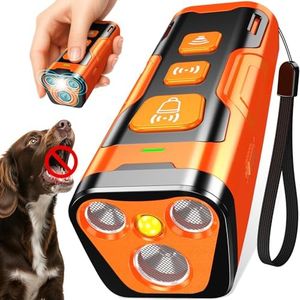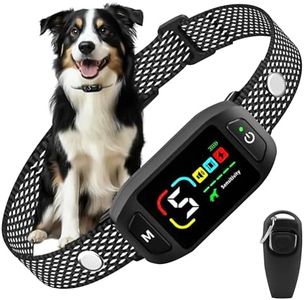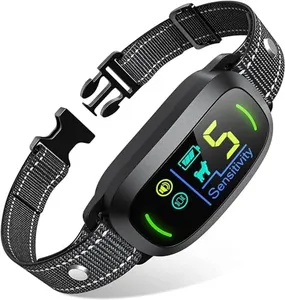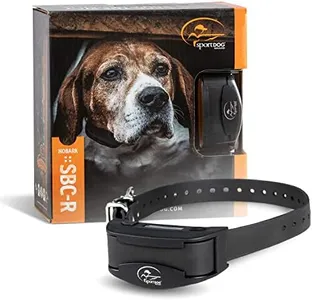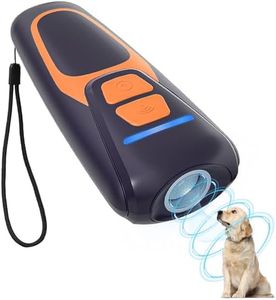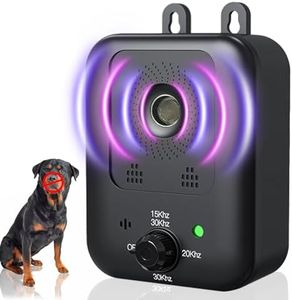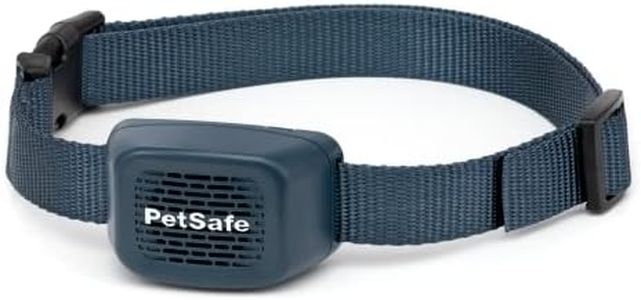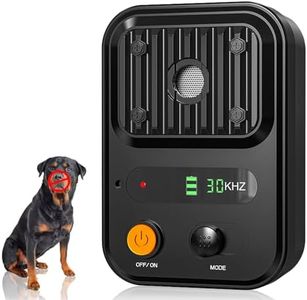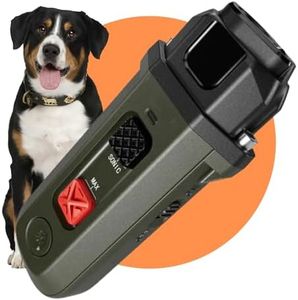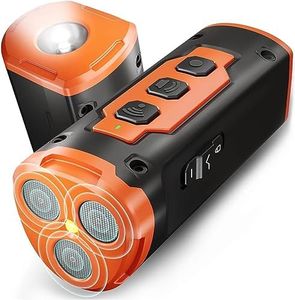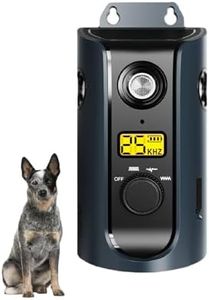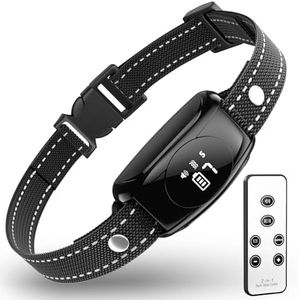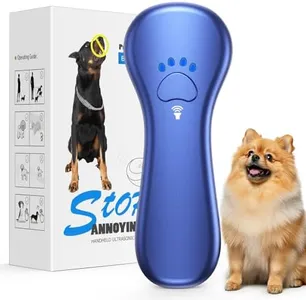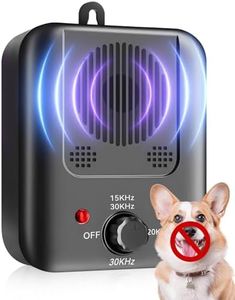We Use CookiesWe use cookies to enhance the security, performance,
functionality and for analytical and promotional activities. By continuing to browse this site you
are agreeing to our privacy policy
10 Best Anti Bark
From leading brands and best sellers available on the web.By clicking on a link to a third party's website, log data is shared with that third party.
Buying Guide for the Best Anti Bark
Choosing the right anti-bark device for your dog can make a significant difference in training and maintaining a peaceful home environment. It's important to understand how these devices work, what their features mean, and which one suits your dog's temperament and your living situation. Focus on your dog's behavior, size, and sensitivity when making a choice, so the device supports effective and humane training.Type of Anti-Bark DeviceAnti-bark devices come in several types such as ultrasonic, vibration, spray, and static (mild shock). The type refers to the method the device uses to discourage barking. Ultrasonic devices emit a sound only dogs can hear, vibration collars gently vibrate on the neck, spray collars release a harmless burst of spray, and static collars deliver a mild electric pulse. The right type for you depends on your dog's sensitivity and how persistent their barking is. Sensitive or nervous dogs often respond best to ultrasonic or vibration, while very determined barkers may require spray or static types. If you're unsure, starting with the gentlest method is usually a good approach.
Sensitivity LevelsSensitivity level determines how easily the device is triggered by barking. Some devices allow you to adjust the sensitivity, meaning you can set them to react only to loud or frequent barking, or even to quieter noises. This feature is important to prevent false triggers from unrelated sounds. If your dog barks softly or only occasionally, a higher sensitivity setting might be needed; for loud or frequent barkers, a lower sensitivity can avoid constant activation. Consider how and when your dog usually barks to pick a device with appropriate sensitivity adjustments.
Size and Weight SuitabilityThis specification refers to what size and weight of dog the device is designed for. Some are made for small breeds, others for large ones. This matters because a device that is too big can be uncomfortable for a small dog, while one that's too small may not be effective on a larger dog. Always check the recommended weight range and pick a model that matches your dog's size to ensure comfort and effectiveness.
Battery Life and Power SourceBattery life indicates how long the device can work before needing a recharge or battery replacement. Devices can be either rechargeable or require replacing batteries. Longer battery life means less maintenance and is useful for consistent training. If you prefer less hassle, rechargeable models may suit you better. Consider how much you’ll use the device and whether you want the convenience of USB charging or the reliability of replaceable batteries.
Waterproof or Weather ResistanceA waterproof or weather-resistant design allows use outdoors or in wet conditions. This is crucial if your dog spends time outside or goes on walks in the rain with the collar on. For mostly indoor pets, weather resistance may not be as necessary, but outdoor pets or frequent walkers should look for waterproof models to prevent device damage.
Safety FeaturesSafety features might include automatic shut-off to prevent overcorrection, gentle warning sounds, or limits on the number of activations. These features protect your dog from stress or unintended continuous correction. If you’re concerned about your dog adjusting to the device, or if you’ll be leaving it on while unsupervised, prioritize models with clear safety mechanisms.

